by Carmen M. Martínez-Roldán, University of Texas, Austin
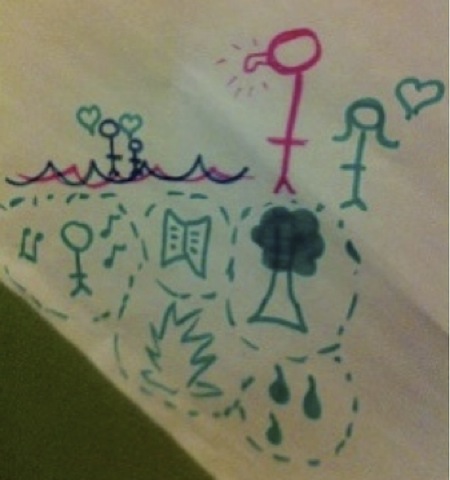 Here are my graduate students’ responses to The Dreamer in sketch format. Each of these sketches is unique and they represent a range of meanings and interpretations reminding us of how we as readers bring to reading our own experiences and histories (Probst, 1990; Rosenblatt, 1976) as readers and individuals.
Here are my graduate students’ responses to The Dreamer in sketch format. Each of these sketches is unique and they represent a range of meanings and interpretations reminding us of how we as readers bring to reading our own experiences and histories (Probst, 1990; Rosenblatt, 1976) as readers and individuals.
As it is reflected in the responses to the first two blogs and in these sketches, the Father figure in the story impacted my students’ reading in different ways. There was some discussion in class about Muñoz’s representation of Neftalí’s father in the story. Was his representation multidimensional or flat? Was his representation of this extreme authoritarian paternal figure closer to what a victim of domestic violence may feel and as such it was an effective description of Neftalí’s perspective as a child?
Discussing Rosenblatt’s (1976) literary theory, Probst (1990) comments: “Thoughtful readers will expect sometimes to find their thinking reaffirmed, sometimes to discover a need to revise visions, to rethink conceptions with which they confront the world, perhaps to refute and abandon notions they have harbored. But they will not approach texts in awe, prepared to accept them uncritically . . . In that process they are likely to come to better understand themselves, the others with whom they work, the texts, and their culture” (p. 31).
Another scene that appears in some of these sketches and that has great potential to support a meaningful discussion and bring out different perspectives is when the father burns Neftalí’s notebooks and writing. We ran out of time in class to discuss it and so I invite my students and the readers of this blog to share your responses and interpretations to this critical moment in the story:
Father’s face flushed with anger. “There will be no more writing in this house!” He grabbed a notebook and flung it out the window. Loose papers fluttered from inside, as if they were trying to fly. Father flung another notebook and another . . . They heard Father’s whistle. Two times, three times, and over and over, unstopping. Laurita walked to the window. “Has he gone mad?” Neftalí jumped up and rushed to her side. A plume of smoke drifted upward from the pile of notebooks set on fire in the middle of the street. Nefatalí yelled, “No!”
(pp. 323-326).
Probst, R. E. (1990). Literature as Exploration and the classroom. In E.J. Farrell, & J. R. Squire (Eds.) Transactions with literature: A fifty-year perspective. National Council of Teachers of English, (pp. 27-37). Portsmouth, NH: Heinemann.
Rosenblatt, L. (1993). The literary transaction: Evocation and response. In R. Hungerford, K. Holland, & S. Ernst (Es.), Journeying: Children responding to literature (pp. 6-23). Portsmouth, NH: Heinemann.
Journey through Worlds of Words during our open reading hours: Monday-Friday, 9 a.m. to 5 p.m. and Saturday, 9 a.m. to 1 p.m.
- Themes: Carmen M. Martínez-Roldán, Dreamer, Pam Munoz Ryan
- Descriptors: Books & Resources, Student Connections, WOW Currents

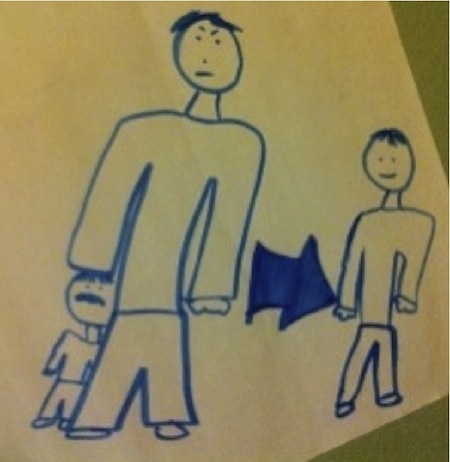
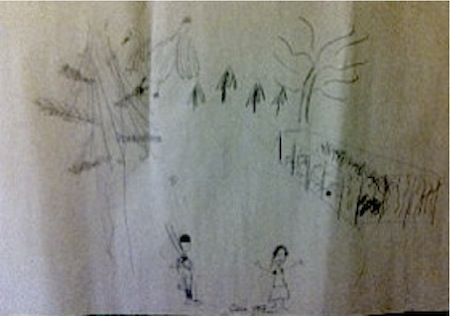
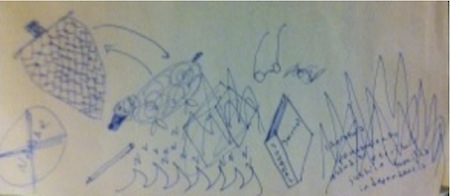
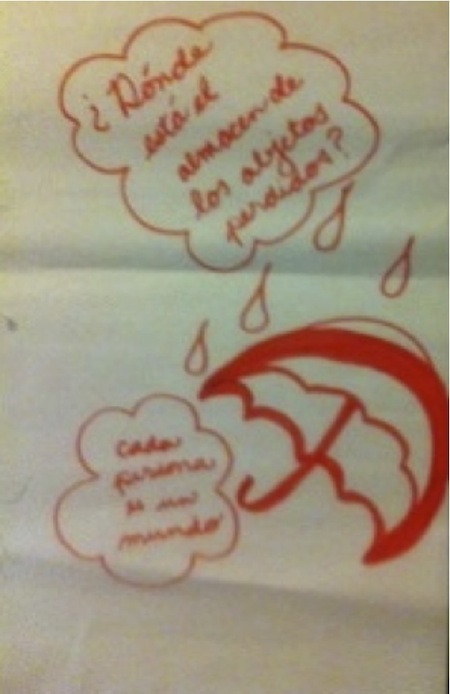
Again, this moment in the story, strong as it is, carries a considerably different significance if we know that it was true in the life of Pablo Neruda. Literally, this moment is shocking and unthinkable–we’ve all had moments when our parents didn’t agree with what we were doing, and they may even have gone as far as to tell us what we should want to be when we grow up. To burn a child’s creations, livelihood even, takes the figure of Padre from merely an overbearing father to someone much more sinister.
However, if this part of the story is Munoz’s metaphorical interpretation of Neruda’s relationship with his father, then the scene is a little less difficult to read. Muñoz may have used the metaphor of Neftalí’s work burning to signify that there came a point when Neruda felt like his father had taken everything away from him, or that he felt trapped and stifled.
Either way, to return to the idea of Padre being a two-dimensional character, I think this moment is less shocking than it could have been had Muñoz built more moments of empathy into the character of Padre. What happens is nothing surprising and almost expected when you have had all the “typical Padre moments” that preceded it.
For me, Padre’s burning of Neftali’s notebooks was one of the most jarring moments of the story. I am not sure that it matters to me if this event actually happened to Pablo Neruda in real life; my reading of this interaction is that is intended to be understood literally. Padre’s portrayal as a relatively one-dimensional character did not make this scene any less shocking for me. Up until this point, Padre’s actions seem motivated by a desire for his children to lead an easier life than he has had. With the burning of the notebooks, his actions cross the line from overly stern to overtly abusive. This is also the point where Neftali’s writing transforms from rebellious to subversive.
This scene also confirmed for me the power that Padre wielded over his family. Padre was never pleased with Neftali’s daydreaming and writing, but he reluctantly tolerated it. I never imagined that the conflict between father and son would reach this point because I felt like other family member served as a protective buffer. Mamadre provides subtle encouragement and support to Neftali throughout the book. Tio Orlando not so subtly supports Neftali by taking him on as an apprentice. Padre’s willingness to burn his son’s most treasured possessions casts him as the ultimate villain. Here his own pride overshadows any well-intentioned, if misguided, attempts to help his son. He is so convinced that he is right and so determined to preserve his reputation in the community, that he is willing to crush his son’s spirit and ignore the desires of other family members.
Like Megan, I found this scene to be one of the most jarring events in the book. However, as upsetting as it was to digest, I appreciate Ryan’s description of this event because it’s a reminder to the reader how powerful and meaningful literature is. While reading about Father’s burning of Neftali’s writing, I thought of Nazis burning Jewish literature during the Holocaust. The Nazis knew that this was a way to oppress Jews and seize power. Similarly, Father knew that this was the ultimate way he could try to control Neftali. While emotionally scathed from the incident, Neftali fortunately showed resilience and did not let Father’s abuse prevent him from writing in the future.
I think this scene affirms the power that Padre THINKS he has over the family. In reality, his indignation only served to strengthen Neftalí’s conviction that he wanted to be a writer–but that he would have to be more subversive about it. It’s a sad scene, I think, because it erases all vague hope Neftalí had that his father would be someone he could ever confide in.
I agree that it doesn’t really matter whether or not this event actually took place in Neruda’s life; I analyzed the book as a piece of literature, not an autobiography. In the back of my head I would say to myself, Oh, this happened to Pablo Neruda, but it wasn’t my focus.
This event is monumental and the ultimate symbol of oppression; it literally burns the past and makes it disappear. It makes all the time and energy seem wasted because all the fruits of Neftalí’s labor vanish. On the other hand, any writer will say that writing is a process they are constantly perfecting. Ironically, this burning may have increased Neruda’s desire to write, giving him the passion to keep doing what he loved in spite of Padre. It makes me think of all the writers and musicians who had atrocious personal lives but produced brilliant works of art.
What’s key in this specific section of the text is Laurita’s comment: “Has he gone mad?” This line confuses me. Laurita is at this moment around 5 years old, yet she makes a peculiarly mature and objective observation of her father, someone who a 5-year-old is not taught to question. I mean, I think a normal reaction from a 5-year-old would be feeling frightened, scared for some reason, in a dazed state of awe perhaps. But questioning her parent’s mental state? For me, Ryan is painting the picture too clear. I like muddy. I like ambiguous.
Daniel raises a valid point about Laurita’s reaction to Father’s horrific actions. On the one hand, I agree that Ryan’s portrayal of Laurita’s inner thoughts could appear contrived and inaccurate because they are seem “advanced” for a child of her age. On the other hand, children frequently ask questions about their surroundings (“Why is the sky blue?”) and people with whom they interact (“Why is mommy so mad right now?”). From this perspective that most children are inherently inquisitive, Laurita’s question (“Has he gone mad?”) reflects somewhat typical behavior.
I was a little unclear about Laurita’s age when Padre burned Neftali’s notebooks. This scene takes place after Neftali was already accepted to university, so I assumed that Laurita was at least in middle school by this point? Regardless, I think Laurita’s question “Has he gone mad?” raises an interesting point. While I think it was unlikely that Padre was mentally ill, the book burning may represent a moment of temporary insanity. On page 24, Ryan writes: “Father’s cheeks were so bloated with rage that he did not even look like himself. Neftali backed away from the uncontrollable frenzy, pressing himself against the wall. What would Father throw out the window next? Neftali himself?” By his own admission, Padre had “tolerated” Neftali’s writing for years due to the interference of Mamadre and Tio Orlando. When a shopkeeper brought Padre Neftali’s article about the Mapuche, I think Padre realizes several things. First, he begins to understand the depth of Neftali’s convictions and that Neftali will continue writing regardless of the consequences. Similarly, he grasps that Neftali will continue writing and advocating despite Padre’s objections. Neftali’s public, mature defiance of Padre’s authority briefly drives Padre mad.
Neftali’s father in the book The Dreamer by Pam Munoz Ryan is a character that the reader loves to hate. José Reyes is a man who wants the best for his family, and he believes that his vision of success is the only acceptable one. Father will go to any extreme to ensure that his children follow his vision for their future. We see just how father will go, in this scene, to make sure that Neftalí cannot physically write when he burns his notebooks. However, what father does not realize is that Neftalí’s talents and ideas lie deep inside him, in a place that he cannot reach or destroy, no matter how hard he tries.
I think that Munoz Ryan uses this passage to illustrate the importance of following one’s heart at any cost possible. It reminds me of a quote I read recently by Steve Jobs, the founder of the Apple corporation. Jobs says
Neftali’s father in the book The Dreamer by Pam Munoz Ryan is a character that the reader loves to hate. José Reyes is a man who wants the best for his family, and he believes that his vision of success is the only acceptable one. Father will go to any extreme to ensure that his children follow his vision for their future. We see just how father will go, in this scene, to make sure that Neftalí cannot physically write when he burns his notebooks. However, what father does not realize is that Neftalí’s talents and ideas lie deep inside him, in a place that he cannot reach or destroy, no matter how hard he tries.
I think that Munoz Ryan uses this passage to illustrate the importance of following one’s heart at any cost possible. It reminds me of a quote I read recently by Steve Jobs, the founder of the Apple corporation. Jobs says
Sarita’s quote by Steve Jobs is relevant and helpful in understanding and interpreting Neftali’s resilience to his father’s abuse. Since I started teaching, I’ve been amazed at the resilience that some of my students exhibit on a daily basis. Whether it’s growing up in an abusive home or being a social outcast in middle school, some students manage to maintain or muster up a sense of self-confidence that helps them with their struggles. The resilience that Neftali shows is rare, impressive, and inspiring and one of the many reasons that I would like for my students to read this book. Even as an adult, I can gain strength from knowing that Pablo Neruda was able to follow his dreams despite family turmoil. I often find that applying the themes and morals of adolescent literature to my own life can be a form of therapy.
Although I understand that these characters were fictionalized and Muñoz Ryan did not create a work of complete non-fiction, I am going to have to again insist on the impact that the story had on me, especially the scene with Padre, knowing that it could have been true. It probably has to do with the way I read books as an adolescent–I gave much more credibility to accounts that were based on true stories than those that were complete fiction. For that reason, I liked the overall message that The Dreamer had more than Judith Cofer Ortiz’s modern-day “fables” in An Island Like Us. I think children of a certain age are attuned to real-life stories, to seeing a tangible figure overcome adversity and live to tell about it.
The Dreamer also resonated with me more than An Island Like You. I think that whether authors write from their own experience or from the real-life events of others, they are able to create more authentic stories. Pam Munoz Ryan’s goal in writing The Dreamer was to share the story of Pablo Neruda’s childhood while Judith Ortiz Cofer’s writing had a more explicit goal of teaching a lesson. Ironically, Ryan’s themes come through much more clearly than Cofer’s. In general, I feel like writing to share a moral is much less believable than writing to share a story. Stories can be highly effective vehicles for reflecting on morals, but making a moral and end unto itself reduces both the quality of the writing and the message the author wants to convey.
This discussion about Neftali and his father make me think about a comment made in the Delgado-Bernal (2002) article we read for class. Towards the end of the article, they note that many of their Chicano students often entered college with a greater sense of altruism and helping their community, compared to other students. This is an interesting observations and if we take it to be true, or at least partly true, you have to ask, why? This is not the forum for sociological debate, but I think the beginning of the answer to the question is the same reason that Neftali keeps writing. Despite constant obstacles and the lack of what would be a typical “nurturing” environment, the dreamy Neftali becomes one of the greatest writers of all time. I think there is causality here; BECAUSE his environment is not conducive to pursuing his dreams, it takes him that much more dedication and drive to succeed, and that is what he does.
In response to the illustrations and how The Dreamer could be applicable in the classroom, it would be useful to talk about reading evoking the five senses. Ryan does a good job making all the senses part of our reading experience, especially sound (the rain, waves, Padres boots, etc.) and touch (the sand, twigs in the forrest). A writer uses the five senses to more clearly and effectively describe an experience or a character, and here Ryan exposes us to that type of writing. Students could then write their own stories or shorter paragraphs where they describe an every-day object using descriptions that focus on sensory details to engage the reader.
I agree that this activity would be a useful way to respond to the book in a classroom setting. Visual representations that relay a reaction to a text can be more powerful and connect in a more meaningful way to what the reader’s experiences are. Especially as a way to respond to The Dreamer, because there are already illustrations to use as a basis. The illustrations throughout the book may be used as a jumping off point for students in their own visual response.
We discussed during class the idea that many times, students stop drawing as a form of expression in late elementary school or middle school. However, I think that a visual response would be the most appropriate and stimulating way to relate to both visual and tactile learners. This activity would be a good one to use in order to successfully differentiate a response activity to any text or other piece of literature, etc.